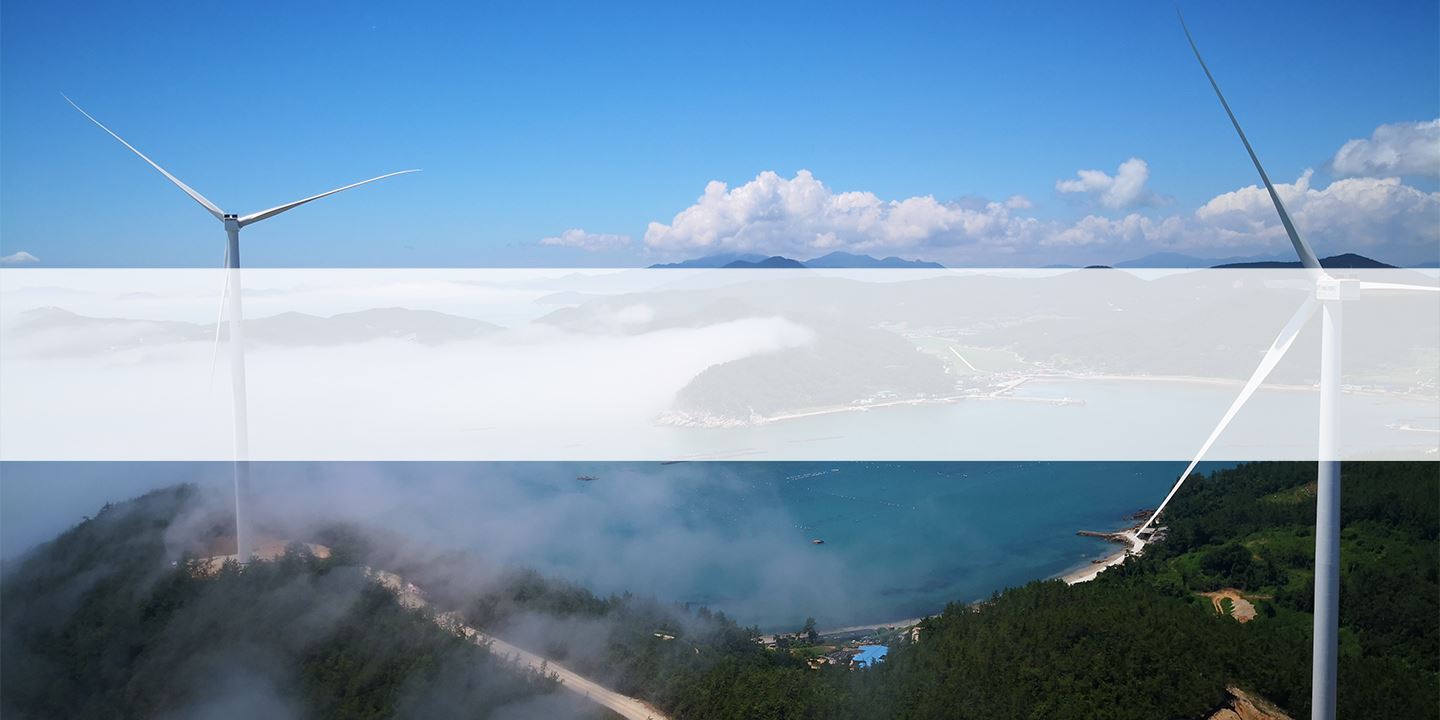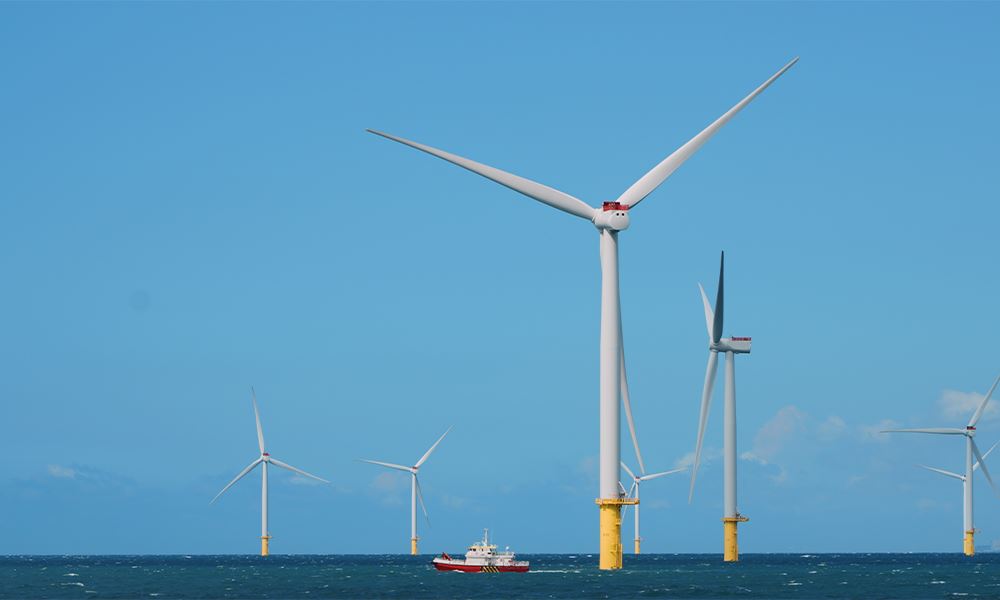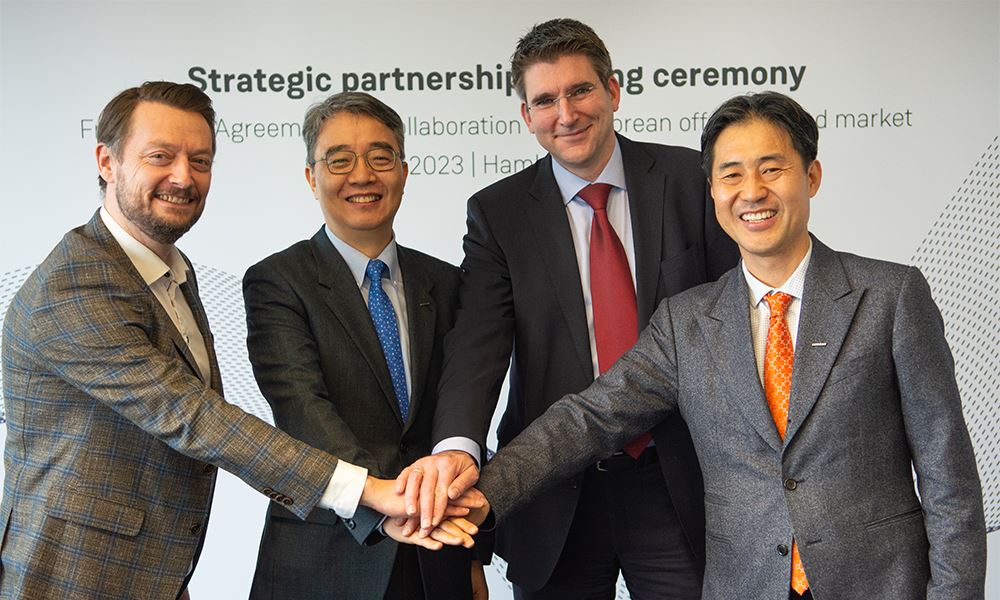
Wind energy primes its wings for takeoff in South Korea
Madrid / 20 June 2023
Wind energy plays an indispensable role in our society, and this is evident in the efforts of our Asia-Pacific team. They are rapidly fast laying the groundwork for an expected surge in offshore installations in South Korea in the coming years, even if challenges remain and for now it’s onshore that continues to make steady progress.
The Korean government has set lofty objectives to increase renewable energy used in power production to just over 21% by 2030 as it strives to hit its carbon neutral target by 2050. Much of this increase would come from offshore wind energy. But despite talk of a rapid growth in offshore wind beginning back in 2014, commercial scale projects will only begin from 2024 in Korean waters. And while it is set to shortly be overtaken significantly, there are still more onshore wind turbines being installed.
At the core of our company’s success lies the unwavering dedication of our people, who are committed to assisting customers and safeguarding the future of our plant. This commitment is evident across various teams in the region, and in offshore, much work is ongoing that they believe will help turn South Korea into our second largest offshore wind market in Asia, second only to Taiwan. Already the country has seen a number of wind developers establish offices in the country, and teams from sales to project managers in the industry are being beefed up in anticipation of a rush in projects to come in the following years.
“There are big installation targets set, but so far no commercial scale project has been installed offshore. But the South Korean market is primed for robust growth going forward. The country has all the right attributes to get there and is supported by a strong local supply chain including some of the biggest steel and shipping companies in the world. This is a market that also incentivizes local content, and so it helps Siemens Gamesa to have the local wind champion in Doosan Enerbility to help us seize opportunities,” said Nikolaus Lingenthal, Head of the Localization and Partnership Program for South Korea at Siemens Gamesa.
Korean industrial conglomerate Doosan Enerbility and Siemens Gamesa signed a strategic framework agreement in 2023 that will see the former assemble nacelles, execute projects, and provide maintenance work to wind sites, subject to being awarded such projects. Meanwhile, Siemens Gamesa will provide its latest technology and expertise in the offshore industry as it aims to become market leader in South Korea.
Need for sustainable supply chain through steady auction pipeline
As well as providing local knowledge, the partnership will also promote a more sustainable supply chain with a firm objective to increase parts from national suppliers, including the steel towers which the nacelles sit on.

“Balancing realistic local-content ambitions with a stable offshore wind build-out outlook is part of the puzzle in creating a successful and sustainable offshore wind industry in South Korea. This includes taking a broader regional Asia Pacific perspective on the supply chain combined with competitive local-supply opportunities. Our partner Doosan Enerbility shares this view, utilizing factories in South Korea and other countries, such as Vietnam,” said Gero Tschierschke, Head of New Markets for the APAC region at Siemens Gamesa.
However, he was also quick to point out that until now the market in Korea has largely been driven by wind industry players. To make the market a success story, it is imperative for the Korean government to demonstrate its commitment to offshore wind market. South Korea aims to hold its latest offshore wind auction in the autumn of 2023, and targets 12 GW of installed capacity by 2030.
According to Siemens Gamesa's local Sales Director, HaeSoon Song, the Korean government should thoroughly examine the power grid issue and urgently expand port facilities capable of accommodating turbine assembly and offshore structures for large-scale projects.
Despite these issues, Doosan was confident that official reviews into the areas mentioned above, as well as strong incentives for developers in offshore wind, would make the industry a success.
“Even considering the hurdles, offshore wind is essential to respond to RE100 and meet the NDC targets in Korea and government is making various effort to grow offshore wind market and industries, e.g., government-driven development of offshore wind farms, incentives for offshore wind.
It takes some time to stabilize the government’s trials in the market, and then significant growth of the offshore market is expected in near future.

Especially high Power Purchase Agreement prices (i.e. incentives) and capacity in other industries to link with the wind industry will provide huge potential for the growth.” said JiWoong Park, Team Leader of Wind Power Sales & Marketing Team 1 from Doosan.
Floating wind in the distance
Other opportunities will also be explored through the partnership, including in onshore wind, and in the next frontier for offshore, floating wind. Floating installations could dramatically open up the opportunities for wind in Korea once sites where the sea is not so deep are utilized.
SeungWoo Sohn, SVP & Head of Power Service Sales & Marketing at Doosan commented: “The east coast of Korea can be suitable for floating wind, even if at present there are still many areas to overcome in the technical and institutional areas. As in other countries fixed offshore wind power will be promoted first. But it seems possible in the mid to long-term to create synergies through Siemens Gamesa’s technology and experience and Doosan's policy and governing capacity.”
Onshore still nudging forward
So much talk of offshore opportunities perhaps clouds the current reality that it is onshore wind that continues to make real progress in the country. Indeed, Siemens Gamesa’s onshore business in South Korea now has around 500 MW of capacity booked in the country, and the team is now working closely with the offshore team to share its knowledge, particularly when it comes to certifying its turbines. In total, Korea had just over 1.6GW of installed wind capacity at the end of 2022, according to the Global Wind Energy Council.
“This is a complex market given strict conditions and local and environmental controls. But we have the right product and a growing team and aim to significantly increase our market share in onshore in the coming years,” said SungHo Hong, Managing Director for Korea in Siemens Gamesa.
Space for growth in the onshore arena is limited, but the team aims to add 200 MW-300 MW annually of capacity in the years ahead.
Together both the onshore and offshore teams, alongside a strong local partner like Doosan, are helping to drive a cleaner and greener future in South Korea to enable the country to meet its target of having 21% of its energy produced from renewable sources by 2030.
